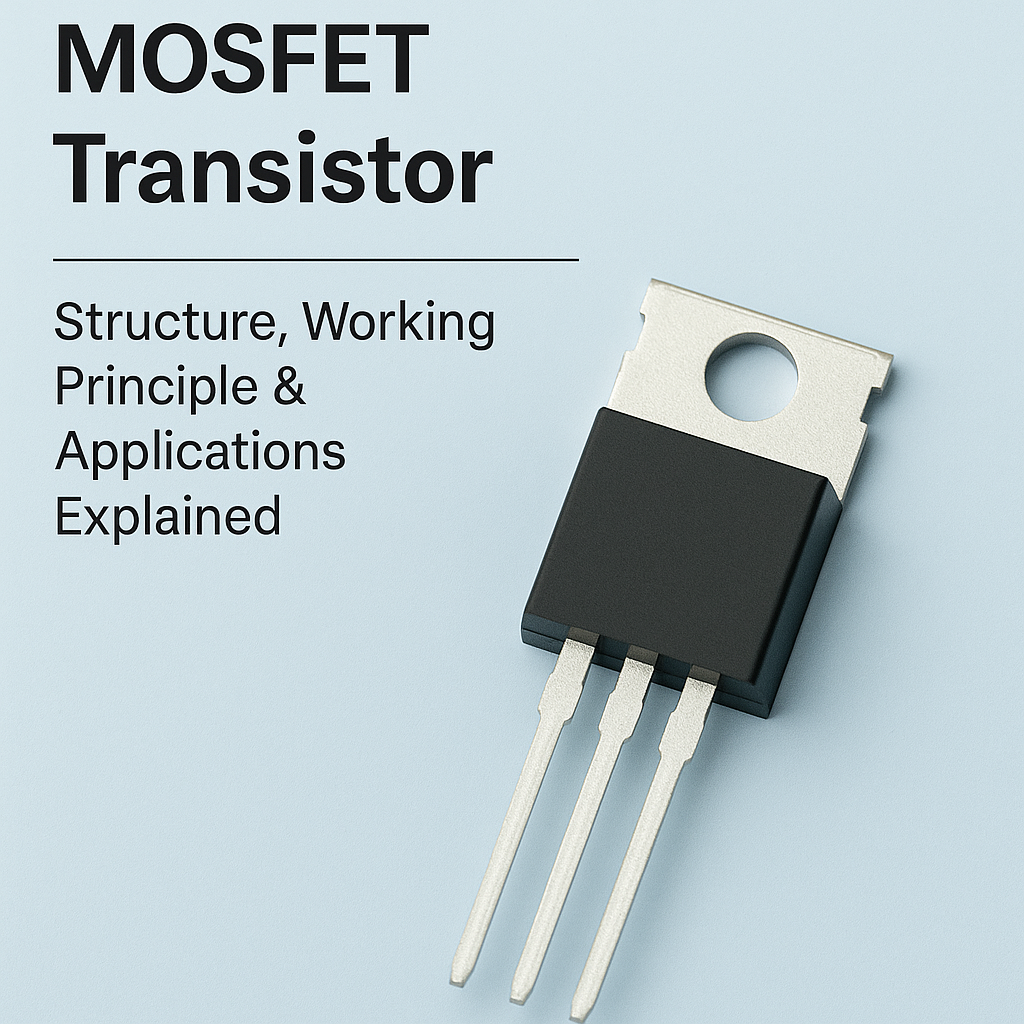Discover the fundamentals of MOSFET (Metal-Oxide-Semiconductor Field-Effect Transistor), including structure, working principle, classification, and key applications in digital circuits, power electronics, automotive control, and sensor systems.

MOSFET (Metal-Oxide-Semiconductor Field-Effect Transistor) is a voltage-driven device controlled by an electric field. It serves as a core component in both integrated circuits and discrete devices, and is widely used in various analog and digital circuit systems due to its simple structure, fast response, and ease of integration.
The development of MOSFET has significantly advanced technologies in power electronics, power management, computer chip design, and automotive electronics.
1. Detailed Structure
The core structure of a MOSFET consists of four basic regions:
Substrate Type and Channel Relationship:
2. Operating Principle (Field-Controlled)
The operation of a MOSFET is primarily based on the field effect, which controls the distribution of charge carriers in the semiconductor.
Controlling On and Off States:
The switching behavior of a MOSFET is determined by the gate-source voltage (VGS):
When VGS ≤ Vth (threshold voltage), the channel forms and the device turns on.
When VGS < Vth, the channel vanishes and the device turns off.
3. Major Classification Methods
MOSFETs can be categorized in various ways based on different criteria:
|
Classification standard |
Type |
Characteristics |
|
By conduction mechanism |
NMOS |
High mobility, fast conduction speed |
|
PMOS |
Low static power consumption, strong anti-interference |
|
|
By working mode |
Enhancement type |
No gate voltage, no conduction |
|
Depletion type |
Default conduction state |
|
|
By Application |
Logic type |
Used for switch control and signal switching |
|
Power type |
Used for power control, motor drive |
NMOS devices are more widely used in high-frequency and high-performance applications due to their higher electron mobility and lower on-resistance.
4. Typical Application Areas
MOSFETs are suitable for various scenarios ranging from low-power control to high-voltage driving:
5. Conclusion
With excellent electrical performance, simple structure, and high controllability, MOSFETs have become indispensable components in the electronics industry.
From consumer electronics and communication equipment to industrial automation and new energy electric vehicles, their applications are ubiquitous.
By understanding their structure, principles, and application features, one can more effectively complete device selection, system design, and product optimization.